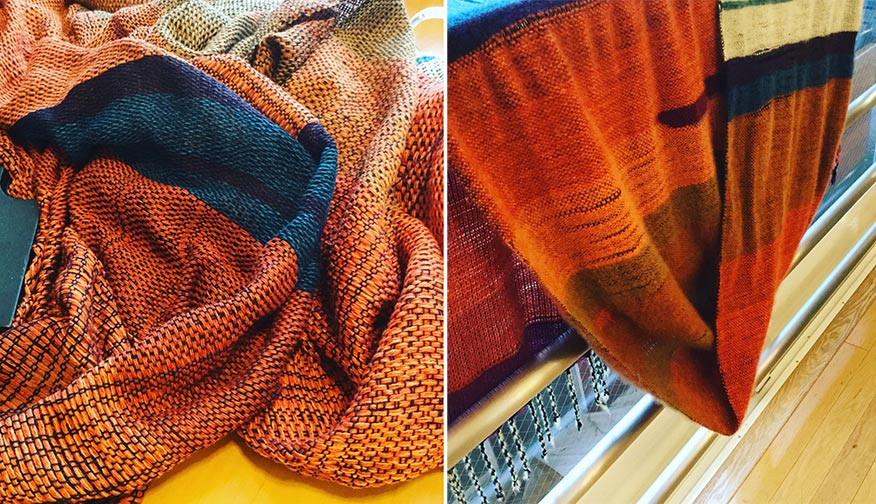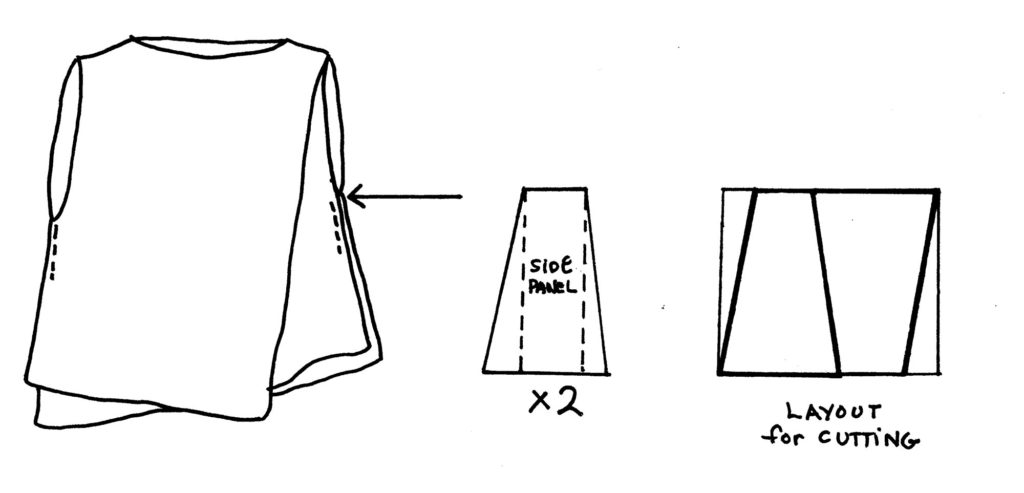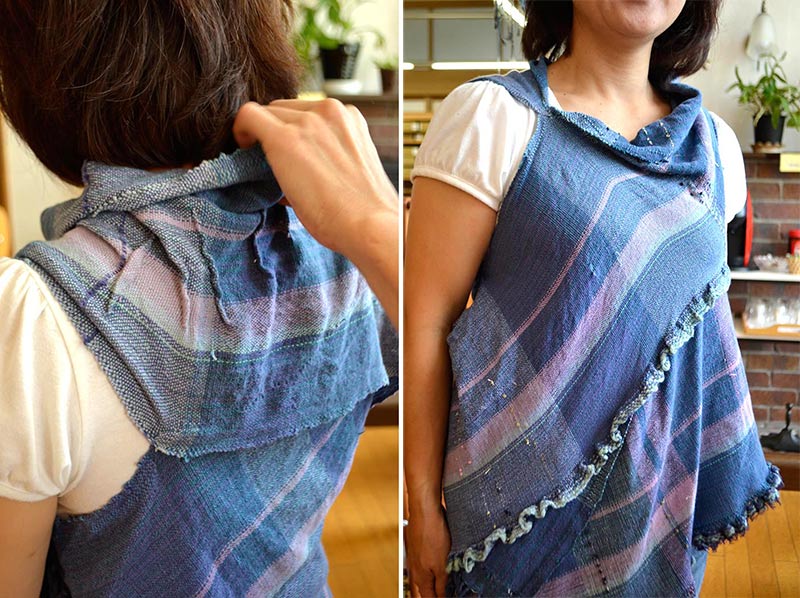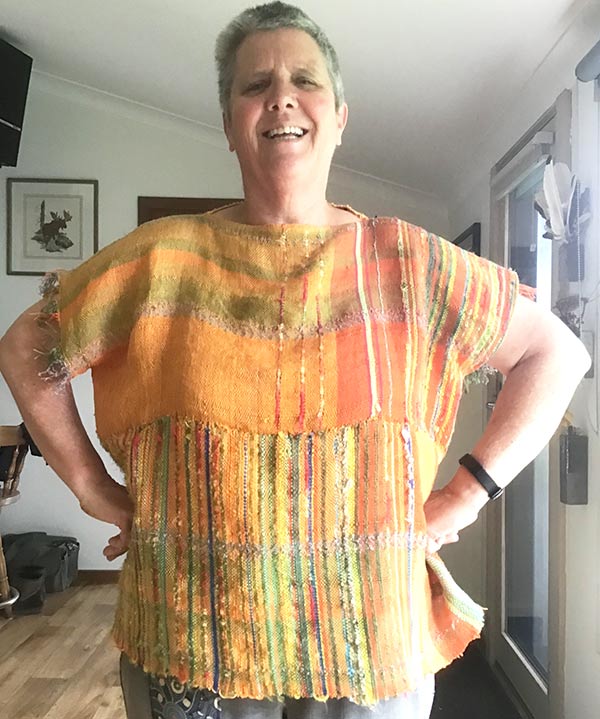Over the lockdowns I’ve presented a couple of Saori garment construction workshops online. In the first sessions of Weave~Cut~Stitch~Shape I overviewed a couple of simple SAORI garments from the Beginners SAORI Clothing Design book.
In this beginner introduction I wanted to cover the following:
-Japanese aesthetics and how they differ to much of our experiences in Australia.
-Offering support and guidance on cutting your handwoven cloth.
-Finishing your cloth to what you want and taking advantage of what the fibres will do.

-How to secure and stitch seams and hems on your cloth. And what these methods look like on your garments.
-How to adapt the clothing shapes to different sizes. Different strategies can be used depending on the design.

One issue that is a shortcoming for us in this book is sizing. Although the simple style of the clothing is very flexible for sizing the measurements given can fall short for many if not most people in Australia where our population is very diverse in body shapes and sizes. I give tips on how to make this easy and not limiting as it can feel. From adding woven lengths to creating darts where they work there are many simple ideas for adjusting these types of free designs.



Anja was delighted with the top she wove and stitched up after the workshop. With her permission I offer you this wonderful photo of her work. She found the top very wearable and comfortable which, after all, is the aim of creating clothing for ourselves.
SAORI clothing design is creative and open in its approach. It is unstructured, relaxed and focuses on the woven cloth as its major feature. Saori inspired weaving insists that everyone can weave the cloth so the clothing can be just as easy and certainly rewarding when you can wear it.
I’m weaving up for my next online session which will focus on bias designs. If you are resident in Australia please subscribe to my newsletter for updates on these types of sessions.

Leave a Reply